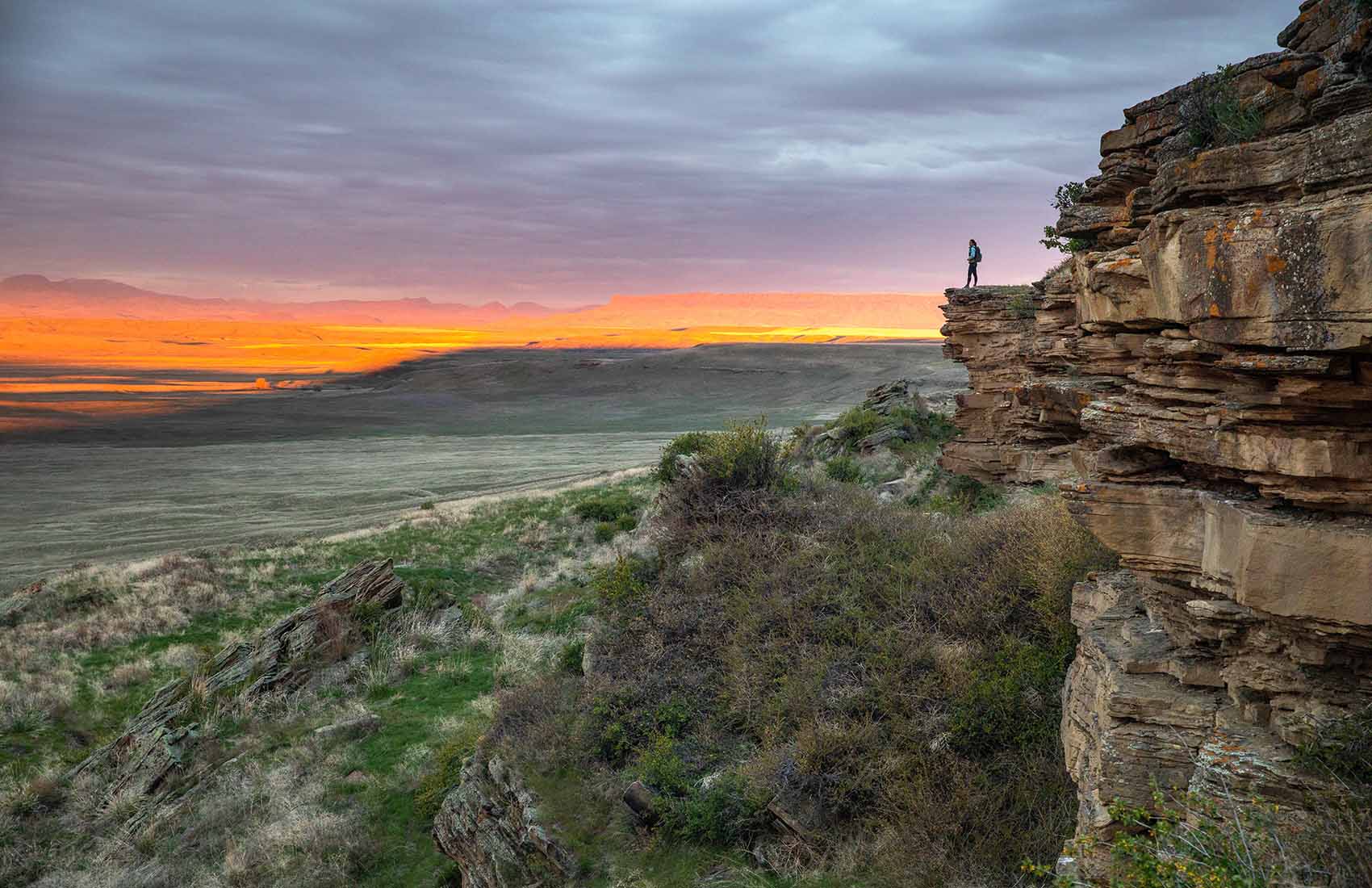Secrets Of Montana’s Ancient Buffalo Jumps

Have you ever wondered how ancient hunters managed to catch enough buffalo to feed entire tribes? Montana's ancient buffalo jumps hold the answer. These historical sites reveal the ingenious methods Native Americans used to hunt massive herds. Imagine standing on the edge of a cliff, watching as skilled hunters guided buffalo toward the precipice. The animals would plunge over the edge, providing a bounty of meat, hides, and bones for the community. Visiting these sites offers a glimpse into the past, showcasing the resourcefulness and teamwork of early inhabitants. Ready to learn more about these fascinating landmarks? Let's dive into the history and significance of Montana's buffalo jumps.
Discovering Montana's Ancient Buffalo Jumps
Montana's vast landscapes hold secrets of ancient hunting practices. Buffalo jumps, where Native Americans drove bison off cliffs, are scattered across the state. These sites offer a glimpse into the ingenuity and survival skills of early inhabitants. Let's explore some of the most fascinating buffalo jumps in Montana.
1. First Peoples Buffalo Jump
Located near Great Falls, First Peoples Buffalo Jump is one of the largest and best-preserved buffalo jumps in North America. The site features a 1,500-foot-long cliff and a visitor center with exhibits on the history and culture of the Plains Indians.
- Location: Near Great Falls
- Highlight: 1,500-foot-long cliff
- Visitor Center: Exhibits on Plains Indians
2. Madison Buffalo Jump
Madison Buffalo Jump, situated near Three Forks, offers stunning views and a rich history. This site was used for over 2,000 years by various tribes. A short hike leads to the top of the jump, where you can imagine the dramatic scenes that once unfolded here.
- Location: Near Three Forks
- Highlight: Used for over 2,000 years
- Activity: Short hike to the top
3. Ulm Pishkun State Park
Ulm Pishkun State Park, now known as First Peoples Buffalo Jump State Park, is another significant site. It features interpretive trails, a visitor center, and breathtaking views of the surrounding plains. The park provides a deep dive into the ancient hunting techniques and the importance of bison to Native American cultures.
- Location: Near Ulm
- Highlight: Interpretive trails
- Visitor Center: Detailed exhibits on hunting techniques
4. Wahkpa Chu'gn Archaeological Site
Wahkpa Chu'gn, located in Havre, is an archaeological site that offers guided tours. This site reveals layers of history, with artifacts dating back thousands of years. Visitors can see the remains of ancient bison bones and tools used by early hunters.
- Location: Havre
- Highlight: Guided tours
- Artifacts: Ancient bison bones and tools
5. Head-Smashed-In Buffalo Jump
Though technically in Alberta, Canada, Head-Smashed-In Buffalo Jump is close enough to Montana to warrant a visit. This UNESCO World Heritage Site provides an extensive look at buffalo hunting practices. The interpretive center offers interactive exhibits and a chance to walk the trails used by ancient hunters.
- Location: Alberta, Canada (near Montana border)
- Highlight: UNESCO World Heritage Site
- Visitor Center: Interactive exhibits
6. Big Horn County Historical Museum
Located in Hardin, the Big Horn County Historical Museum includes a buffalo jump exhibit. This museum offers a broader look at the history of the region, including the role of buffalo jumps in the lives of Native Americans. The exhibit features artifacts and detailed information about the hunting practices.
- Location: Hardin
- Highlight: Buffalo jump exhibit
- Museum: Broader regional history
7. Pictograph Cave State Park
Pictograph Cave State Park, near Billings, is known for its ancient rock art, but it also has a buffalo jump. The park's trails lead to caves with pictographs that tell stories of early inhabitants. The combination of rock art and buffalo jump makes this site a unique historical treasure.
- Location: Near Billings
- Highlight: Ancient rock art
- Trails: Lead to caves with pictographs
8. Makoshika State Park
Makoshika State Park, Montana's largest state park, features rugged badlands and a buffalo jump. The park offers hiking trails, a visitor center, and stunning geological formations. The buffalo jump here provides insight into the hunting strategies used by Native Americans in this challenging terrain.
- Location: Glendive
- Highlight: Rugged badlands
- Visitor Center: Information on hunting strategies
9. Beaverhead Rock State Park
Beaverhead Rock State Park, near Dillon, includes a buffalo jump used by the Shoshone tribe. The park is named after a prominent rock formation that resembles a beaver's head. This site offers a glimpse into the hunting practices of the Shoshone and the significance of the buffalo in their culture.
- Location: Near Dillon
- Highlight: Shoshone tribe buffalo jump
- Feature: Beaverhead rock formation
10. Pompeys Pillar National Monument
Pompeys Pillar National Monument, near Billings, is famous for its historical inscriptions, including William Clark's signature. However, it also has a lesser-known buffalo jump. The monument offers a mix of history, archaeology, and natural beauty, making it a fascinating destination.
- Location: Near Billings
- Highlight: Historical inscriptions
- Feature: Lesser-known buffalo jump
Montana's Buffalo Jumps: A Glimpse into History
Montana's ancient buffalo jumps offer a fascinating look into Native American history. These sites, like Head-Smashed-In Buffalo Jump and Madison Buffalo Jump, reveal the ingenuity and skill of early hunters. They used the landscape to their advantage, driving herds over cliffs to secure food, tools, and clothing.
Visiting these sites today, you can almost hear the thunder of hooves and feel the excitement of a successful hunt. The interpretive centers and trails provide a deeper understanding of the cultural significance and the methods used in these hunts.
Exploring Montana's buffalo jumps isn't just about seeing historical sites. It's about connecting with the past and appreciating the resourcefulness of the people who lived here long before us. So next time you're in Montana, take a moment to visit these incredible landmarks. You'll walk away with a newfound respect for the history and heritage they represent.

